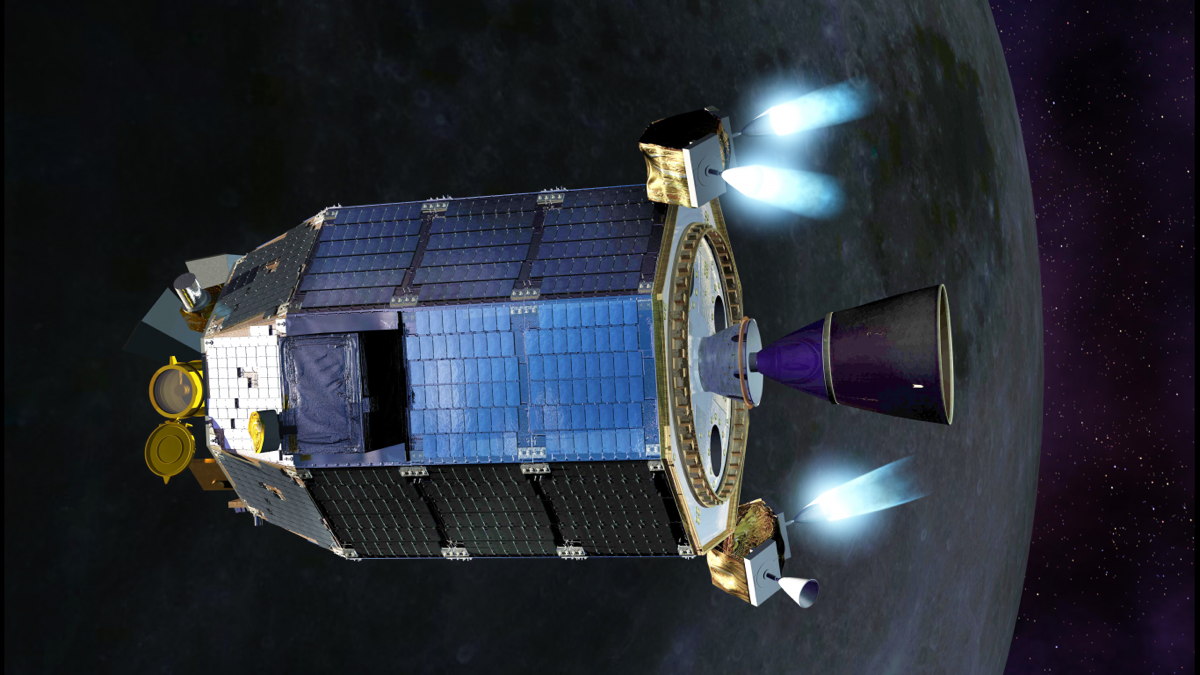NASA Spacecraft Cruising to Moon With Novel Design

A NASA spacecraft journeying to the moon is getting there in style with never-before-used spacecraft design.
The Lunar Atmosphere and Dust Environment Explorer (LADEE) launched toward the moon Friday (Sept. 6) in a dazzling nighttime liftoff. The mission, which is aimed at exploring long-standing mysteries of the moon's atmosphere and lunar dust, is also the first test of the NASA's new "Modular Common Spacecraft Bus" design.
The new design could have wide-reaching effects on the way that space agency engineers craft spacecraft in the future, potentially making missions more cost effective, efficient and faster, NASA officials said. [Spectacular Night Launch Photos of NASA's LADEE Spacecraft]
"LADEE’s common bus is an innovative concept that brings NASA a step closer to multi-use designs and assembly line production, while moving away from custom design," S. Pete Worden, the director of NASA's Ames Research Center in Moffett Field, Calif., said in a statement. "This mission will put the common bus design to the test. This same common bus can be used on future missions to explore other destinations, including voyages to orbit and land on the moon, low-Earth orbit, and near-Earth objects."
In the past, NASA engineers have developed spacecraft from the ground up for each unique mission, but the $280 million LADEE moon mission marks a change in that method. Instead of creating a very specific spacecraft for the mission, NASA officials took a more generalized approach.
LADEE is created from a series of general purpose modules can be mixed and matched to fit many robotic mission parameters in the solar system.
"NASA is looking for affordable ways to launch often and inexpensively," David Korsmeyer, director of engineering at NASA Ames, said in a statement. "We can use off-the-shelf components because customized components are expensive to continually develop and improve. If these systems work successfully, NASA will be looking for other commercial technologies to use for space exploration."
Get the Space.com Newsletter
Breaking space news, the latest updates on rocket launches, skywatching events and more!
Just after its flawless Friday night launch, LADEE encountered a technical glitch after separating from the Minotaur V rocket that carried it into space.
LADEE's onboard computer shut down the spacecraft's reaction wheels used to stabilize the probe's attitude because they were drawing too much current. Engineers got the wheels up and running again the next day.
The spacecraft's design actually saved the probe from a potentially more serious situation.
LADEE's solar panels are integrated into the body of the craft unlike many spacecraft that need to deploy folding panels for power. Because of its design, engineers didn't need to immediately correct the attitude of the craft, allowing them some extra time to figure out the situation.
"If [the spacecraft] is spinning in some way and the panels aren't getting any sunlight, you would have to do something really quick," Worden said after launch. "One of the nice things about this design is that you [didn't need] to do things suddenly."
The LADEE spacecraft the first ever designed, integrated, built and tested by NASA's Ames Research Center, according to space agency officials.
Follow Miriam Kramer @mirikramer and Google+. Follow us @Spacedotcom, Facebook and Google+. Original article on SPACE.com.
Join our Space Forums to keep talking space on the latest missions, night sky and more! And if you have a news tip, correction or comment, let us know at: community@space.com.

Miriam Kramer joined Space.com as a Staff Writer in December 2012. Since then, she has floated in weightlessness on a zero-gravity flight, felt the pull of 4-Gs in a trainer aircraft and watched rockets soar into space from Florida and Virginia. She also served as Space.com's lead space entertainment reporter, and enjoys all aspects of space news, astronomy and commercial spaceflight. Miriam has also presented space stories during live interviews with Fox News and other TV and radio outlets. She originally hails from Knoxville, Tennessee where she and her family would take trips to dark spots on the outskirts of town to watch meteor showers every year. She loves to travel and one day hopes to see the northern lights in person. Miriam is currently a space reporter with Axios, writing the Axios Space newsletter. You can follow Miriam on Twitter.